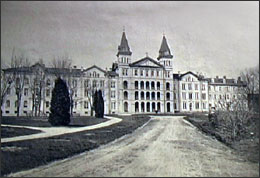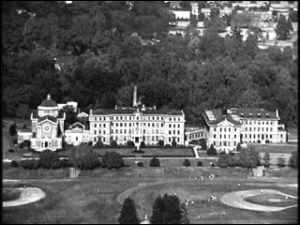- Contact Us
- Careers
- Policies
- About Us
- Parishes
- Schools
- Ministries
- The Office of Black Catholic Ministries
- Hispanic Ministry
- Charismatic Renewal
- Marriage & Family Life
- College Campus Ministry
- Courage/EnCourage
- Miscarriage Ministry
- Prayer Ministry
- Deaf Ministry
- Prison Ministry
- Disabilities Ministry
- Divine Worship
- Divorce Support
- Faith Formation
- Grief Ministry
- Mental Wellness Resources
- Respect Life
- Seek the City to Come
- Young Adult Ministry
- Youth Ministry
- LGBT Pastoral Accompaniment
- Vocations
- myArch
- Outlook365
- Ethics Hotline
- Giving
- Promise to Protect

 St. Charles College began as a result of the generosity of Charles Carroll. Carroll, a wealthy gentleman living in Catonsville, donate 254 acres near his home at Doughoregan Manor along with 50 shares of bank stock for the funding of a college whose purpose would be to educate “pious young men…for the ministry of the gospel.”
St. Charles College began as a result of the generosity of Charles Carroll. Carroll, a wealthy gentleman living in Catonsville, donate 254 acres near his home at Doughoregan Manor along with 50 shares of bank stock for the funding of a college whose purpose would be to educate “pious young men…for the ministry of the gospel.” St. Charles College was destroyed by fire in 1911. It was decided that the new campus would be rebuilt near Catonsville, on land previously acquired for a house of philosophy. In a continued effort for expansion, Archbishop Curley donated most of the $200,000 he received on the occasion of his silver jubilee of ordination so that an administration building could be finished. Then in 1960 ground was broken for an $800,000 dormitory and classroom building.
St. Charles College was destroyed by fire in 1911. It was decided that the new campus would be rebuilt near Catonsville, on land previously acquired for a house of philosophy. In a continued effort for expansion, Archbishop Curley donated most of the $200,000 he received on the occasion of his silver jubilee of ordination so that an administration building could be finished. Then in 1960 ground was broken for an $800,000 dormitory and classroom building.